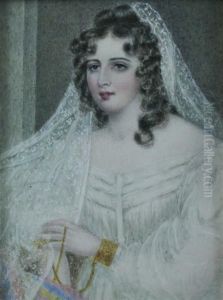John J. Boyle Paintings
John J. Boyle was a prominent American sculptor whose career spanned the late 19th and early 20th centuries. Born on December 2, 1851, in New York City, Boyle displayed artistic talent at an early age. He began his formal art education at the Franklin Institute in Philadelphia and later continued his studies at the Pennsylvania Academy of the Fine Arts. His desire to hone his sculptural skills further led him to the École des Beaux-Arts in Paris, where he studied under the tutelage of François Jouffroy.
Boyle's work was heavily influenced by his travels and studies in Europe, and upon his return to the United States, he quickly established himself as a skilled sculptor. He became known for his ability to capture both the human form and the nuances of individual character in his works. His sculptures often depicted historical figures, allegorical subjects, and Native American themes, reflecting the cultural interests and tensions of his time.
One of his most famous works is the bronze statue 'Stone Age in America,' which he completed in 1887. The piece is considered a significant example of American sculpture from the period and reflects Boyle's interest in Native American culture. It was exhibited at the 1893 World's Columbian Exposition in Chicago and stands today in Philadelphia's Fairmount Park.
Throughout his career, Boyle received numerous commissions for public monuments. These include the statue of Benjamin Franklin for the University of Pennsylvania and the equestrian statue of General George B. McClellan in Philadelphia. His works can be found in various public spaces and museums across the United States.
Beyond his sculptural work, Boyle was also an educator and advocate for the arts. He served as an instructor at the Pennsylvania Academy of the Fine Arts, where he influenced a new generation of sculptors.
John J. Boyle's contributions to American sculpture were widely recognized during his lifetime, and his works continue to be appreciated for their craftsmanship and historical significance. He passed away on February 10, 1917, leaving behind a legacy as one of the era's most respected sculptors.
